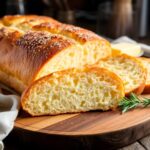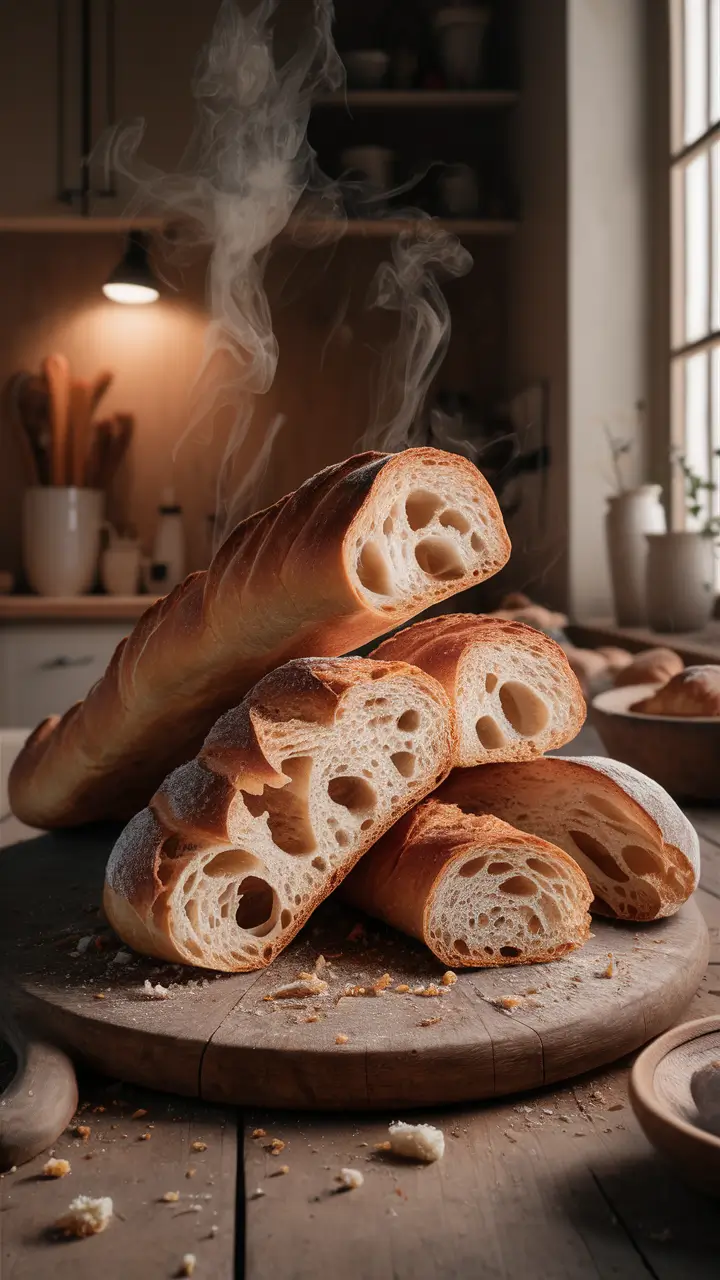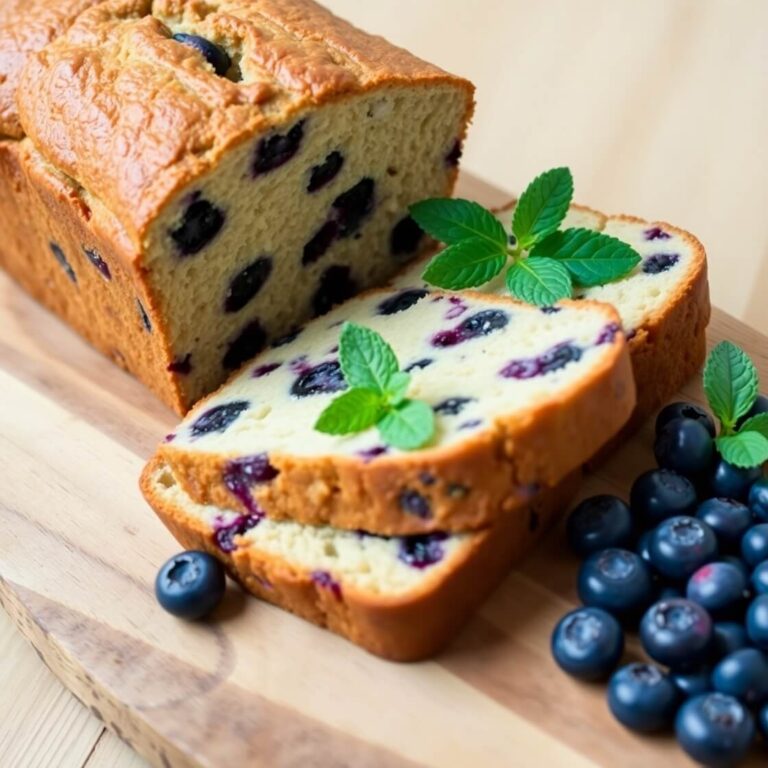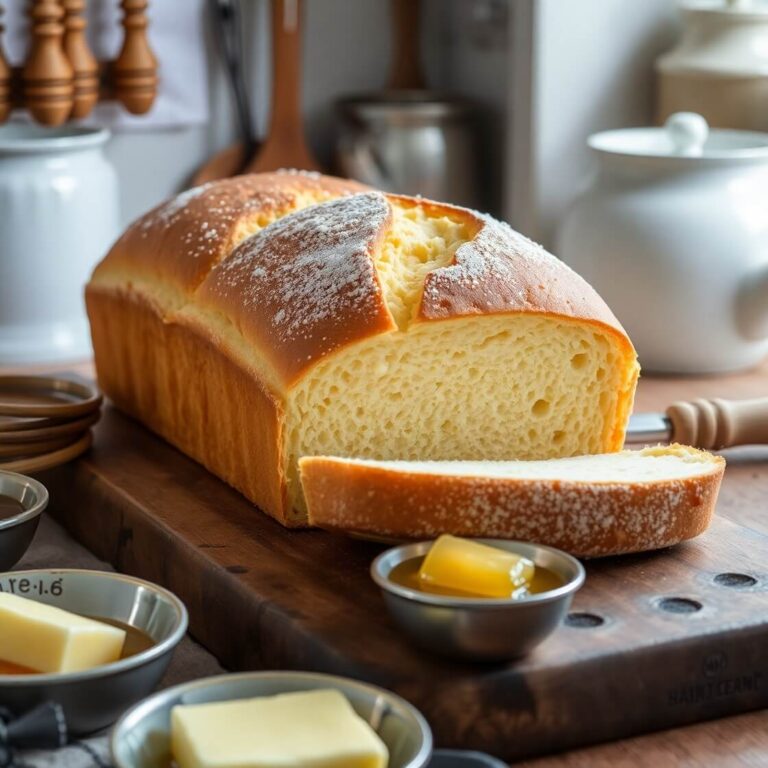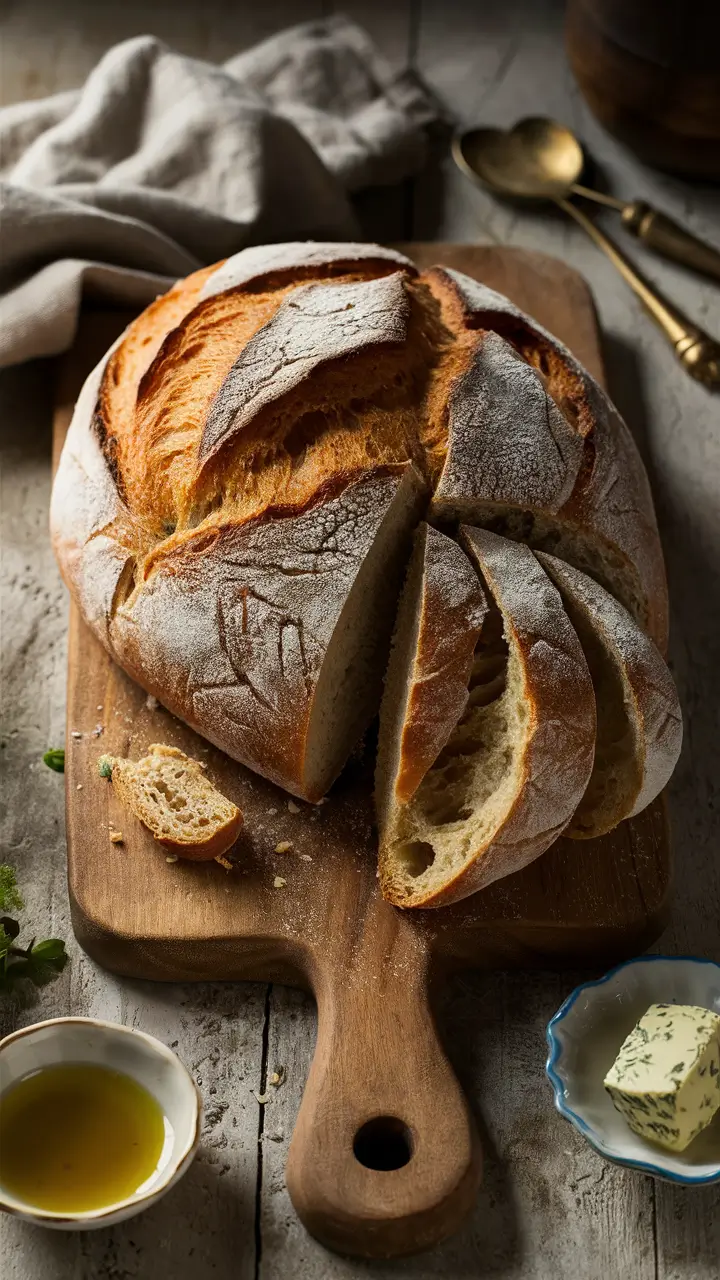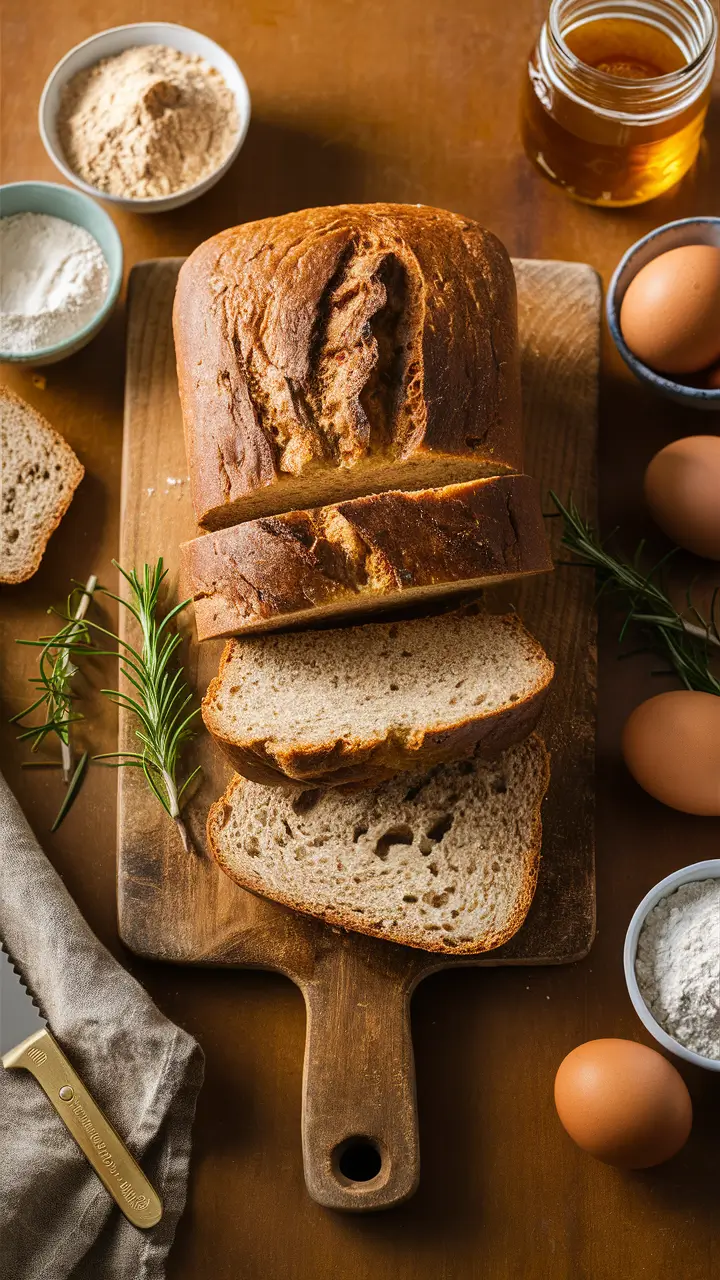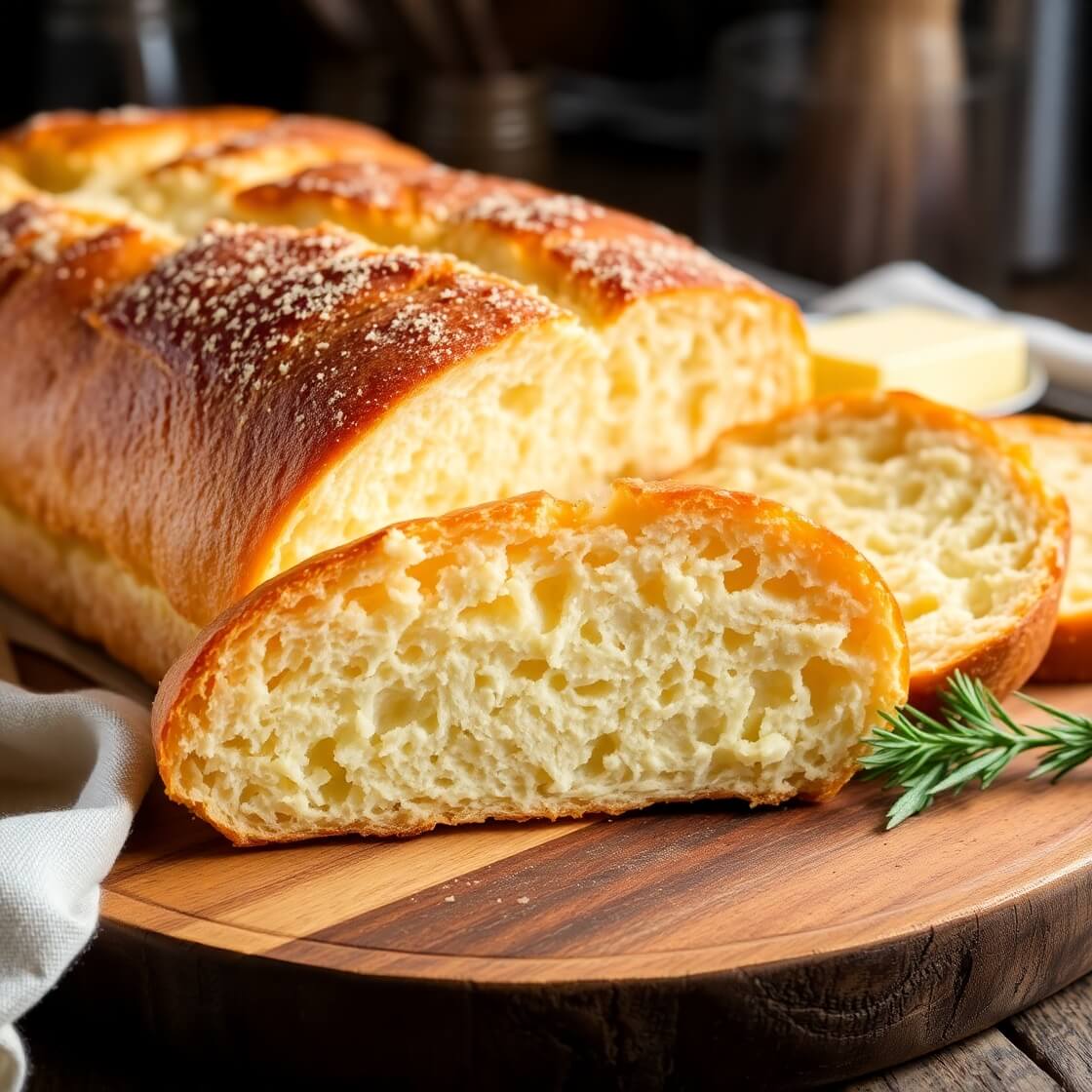
Bread has always been a comfort food, a timeless staple in homes around the world. Whether it’s the comforting aroma that fills the kitchen while baking or the soft texture that makes each bite irresistible, bread has a way of making us feel at home. But, sometimes, the usual bread recipes can become a little predictable, which is why I wanted to share something a bit different: Cottage Cheese Bread.
This recipe brings a delightful twist to the standard loaf by incorporating cottage cheese, which gives the bread an extra layer of moisture and richness. Imagine a loaf that’s soft, slightly tangy, and just the right amount of dense—perfect for slathering with butter or making sandwiches. The idea for this recipe came after experimenting with different ingredients that would add texture and moisture without compromising the flavor. Cottage cheese was the perfect answer. It’s creamy, high in protein, and offers a unique taste that’s neither too overpowering nor too subtle. If you’re a fan of moist, slightly savory bread with a deliciously tender crumb, this is the recipe for you.
Ready to give it a try? Keep reading to discover the ingredients, step-by-step instructions, and everything you need to know about making Cottage Cheese Bread.
Why I Love This Recipe
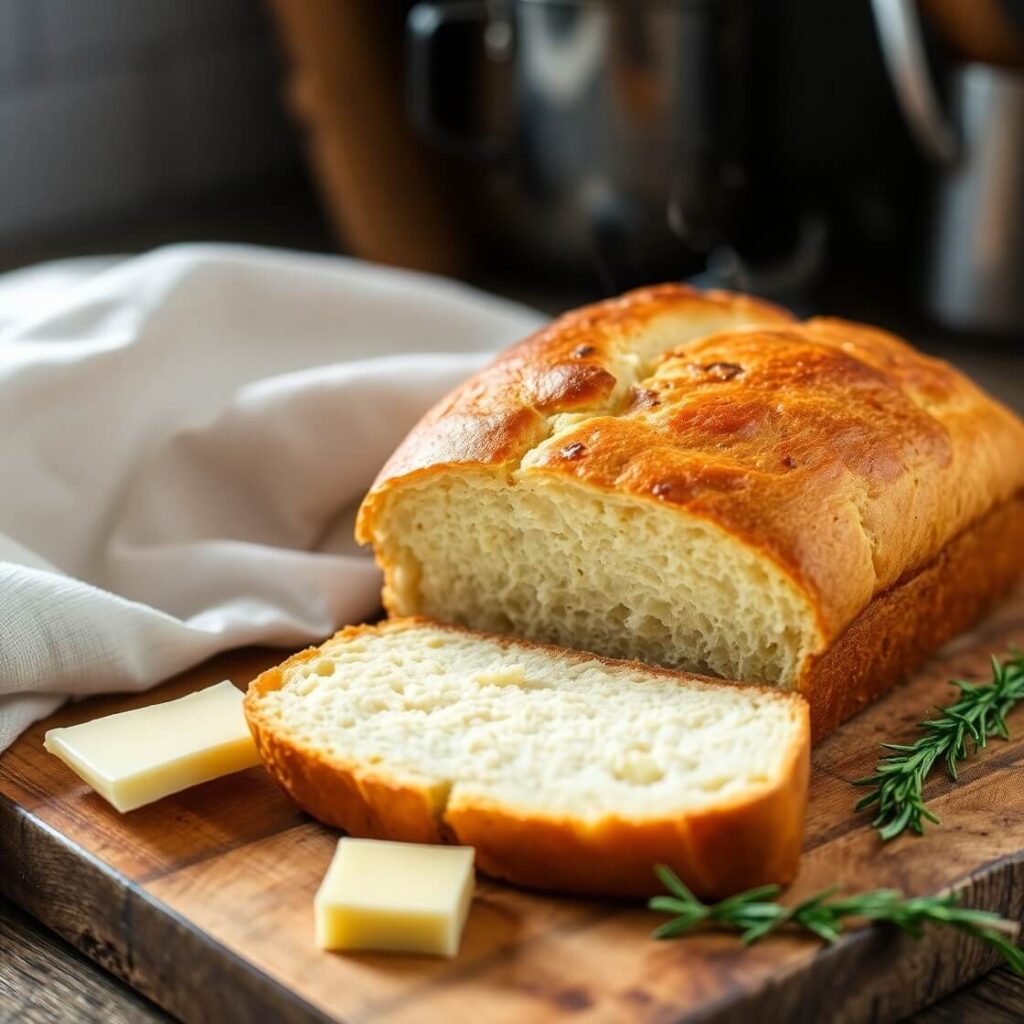
There’s something incredibly satisfying about baking bread from scratch. The smell of it rising in the oven and the anticipation of slicing into a fresh loaf is one of life’s simple pleasures. But Cottage Cheese Bread takes that satisfaction to the next level. Not only does it provide all the comfort of traditional bread, but it’s made even better with the addition of cottage cheese.
The beauty of this recipe lies in its versatility. You can enjoy it with just a bit of butter, use it for sandwiches, or pair it with soups and stews. The cottage cheese in the dough contributes to a soft, moist texture, which is often the challenge with homemade bread. Many loaves can end up dry or too crumbly, but this one stays perfectly tender.
What really sets this bread apart, though, is the slightly tangy flavor that the cottage cheese imparts. It’s subtle enough not to overpower the taste of the bread, but it adds just the right amount of richness. It’s also a fantastic source of protein, which makes it a great option for a more filling snack or a hearty side dish to your meals. Trust me, once you try this recipe, you’ll be hooked.
Ingredients for Cottage Cheese Bread
Now that you know why this bread is so special, let’s talk about the ingredients you’ll need to create it. Fortunately, this recipe doesn’t call for anything too exotic. Most of the ingredients are likely to be already in your pantry, which is one of the things I love about it—it’s an easy, go-to bread that’s perfect for any occasion.
- Cottage Cheese: The star ingredient. Full-fat or low-fat cottage cheese both work well, but full-fat will give you the richest, most moist bread.
- Flour: All-purpose flour is the foundation of this bread. It provides the right structure and helps the bread rise beautifully.
- Yeast: Active dry yeast is the type you’ll need for this recipe. It helps the bread rise and become soft and fluffy.
- Sugar: A little sugar helps activate the yeast and provides a hint of sweetness to balance out the savory flavors of the cottage cheese.
- Salt: Salt is essential for flavor and for regulating the yeast’s activity. It also enhances the overall taste of the bread.
- Egg: This helps to bind the ingredients together and adds richness to the bread.
- Butter: For flavor and richness, butter adds a lovely depth to the dough. You can use unsalted butter to control the salt level.
- Milk: Warm milk helps dissolve the sugar and activates the yeast. It also makes the dough softer.
That’s it! These simple ingredients come together to make a bread that’s light, moist, and full of flavor.
How Much Time Will You Need
One of the things I love about this recipe is that while it does require a bit of time for the dough to rise, it’s not a long process. Here’s a rough breakdown:
- Prep Time: 10-15 minutes
- Resting Time for Dough: 1-1.5 hours (for rising)
- Baking Time: 30-35 minutes
Overall, you’ll need about 2 hours from start to finish, but most of that is hands-off time while the dough rises. So, it’s perfect for a weekend baking project or an easy weeknight side dish.
How to Make This Cottage Cheese Bread
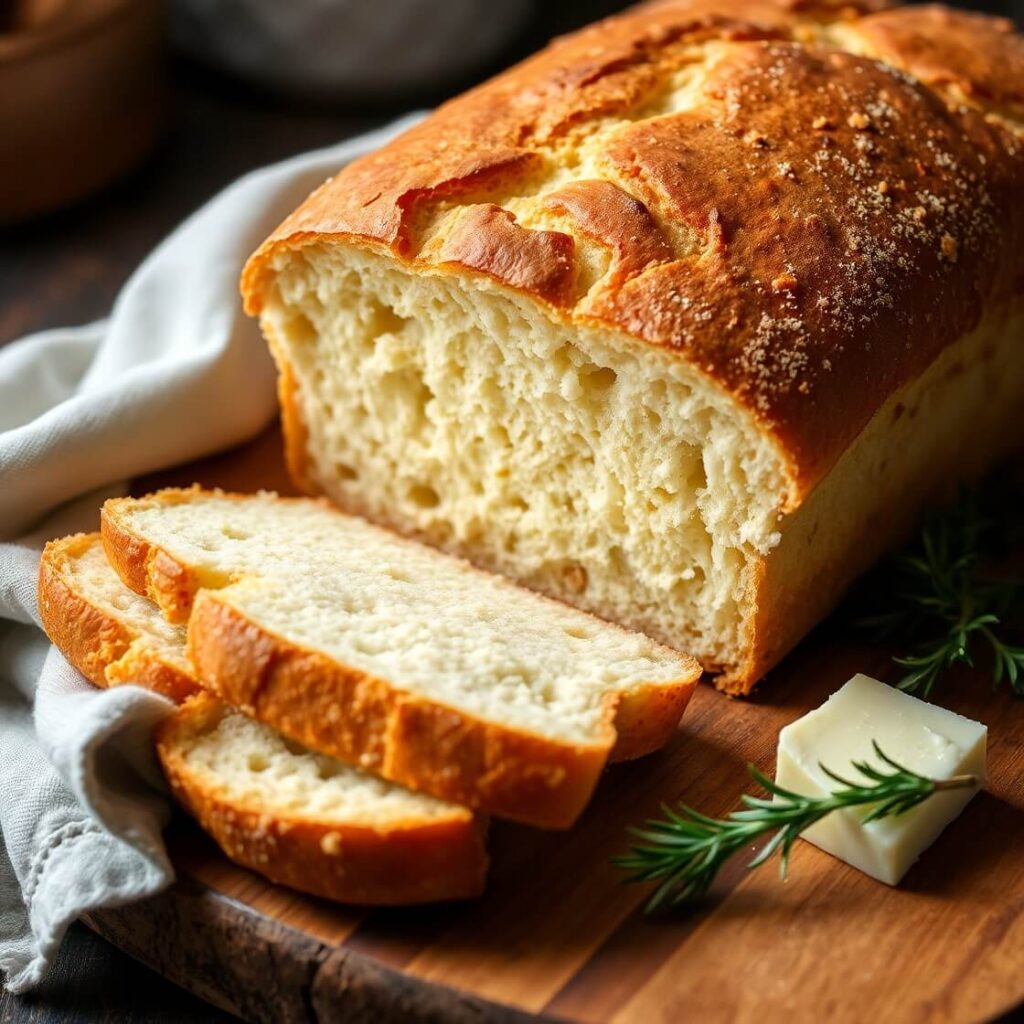
Let’s dive into the step-by-step process of making Cottage Cheese Bread. Don’t worry—it’s easier than it sounds!
Step 1: Warm the Milk and Activate the Yeast
Start by warming up your milk. You want it to be warm, not hot—about 100°F to 110°F is perfect. Once it’s warmed, stir in the sugar and yeast. Let it sit for about 5 minutes. If the yeast is working, you should see some bubbles and foam form on top. If this doesn’t happen, your yeast may be old or the milk may have been too hot, so try again.
Step 2: Mix the Wet Ingredients
In a separate bowl, combine the cottage cheese, butter, and egg. Stir them together until the mixture is smooth. This is where the richness of the cottage cheese starts to shine through.
Step 3: Combine Dry and Wet Ingredients
Once the yeast mixture has bubbled up, pour it into the wet ingredients bowl. Mix everything together until it’s well combined.
Step 4: Add Flour and Salt
Gradually add the flour and salt to the wet ingredients. Stir it together until the dough starts to come together. You may need to knead it for about 5-8 minutes until it becomes a smooth, elastic dough. If it feels too sticky, add a little more flour, but don’t overdo it. You want the dough to be soft but not overly dry.
Step 5: Let the Dough Rise
Form the dough into a ball and place it in a lightly greased bowl. Cover it with a clean kitchen towel and let it rise in a warm spot for about an hour, or until it has doubled in size. This is where the magic happens!
Step 6: Shape the Dough
Once the dough has risen, punch it down to release the air bubbles. Turn it out onto a lightly floured surface and shape it into a loaf. Place the loaf into a greased loaf pan and cover it again with the kitchen towel. Let it rise for another 30 minutes.
Step 7: Bake the Bread
Preheat your oven to 350°F (175°C). Once the dough has risen for the second time, place the loaf in the oven and bake it for 30-35 minutes, or until the top is golden brown. You can test if it’s done by tapping the bottom of the loaf—it should sound hollow.
Step 8: Cool and Slice
Once the bread is done baking, remove it from the oven and let it cool for 10-15 minutes before removing it from the pan. Allow it to cool completely on a wire rack before slicing. This step is crucial because it helps the texture set.
Substitutions
Not everyone has cottage cheese on hand, or you might want to try different variations. Here are a few substitutions you can make to personalize this bread to your taste:
- Greek Yogurt: If you don’t have cottage cheese, Greek yogurt can serve as a great substitute. It will still give the bread that lovely tang and moisture, though the texture may be slightly different.
- Sour Cream: Another option for a tangy twist is sour cream. It’s a bit richer than cottage cheese but will work beautifully.
- Buttermilk: If you want a more subtle flavor, buttermilk is an excellent alternative for adding moisture and a mild tang.
- Dairy-Free Options: For a dairy-free version, use plant-based alternatives like almond milk or coconut milk and non-dairy yogurt. The texture will be slightly different, but it’ll still be delicious!
Best Side Dish for Cottage Cheese Bread
This bread is versatile and pairs well with many dishes. Here are three great options to serve alongside your Cottage Cheese Bread:
- Tomato Basil Soup: A warm, comforting bowl of soup is the perfect companion to this moist bread. The tangy flavor of the cottage cheese bread complements the savory soup wonderfully.
- Grilled Chicken Salad: For a light yet hearty meal, serve Cottage Cheese Bread with a fresh, grilled chicken salad. The bread’s soft texture and rich flavor balance the crisp, light nature of the salad.
- Cheese and Charcuterie Board: Pairing this bread with a selection of cheeses and cured meats makes for a simple yet elegant snack or appetizer.
Serving and Presentation Tips
When it comes to serving Cottage Cheese Bread, presentation plays a significant role in elevating the experience. This bread has a soft, rustic appearance that fits perfectly in both casual and more formal settings. Whether you’re serving it for a family meal or showcasing it at a dinner party, here are some tips to present it beautifully:
- Slice Neatly: For a more refined presentation, slice the bread evenly with a serrated knife. The bread’s crumb is soft, and neat slices will make it look professional and inviting.
- Use a Bread Basket: A bread basket lined with a clean cloth or napkin is a great way to present the bread. The cloth will absorb any moisture from the bread and keep it looking fresh. A simple wicker or wooden basket adds a rustic touch that complements the bread’s homemade feel.
- Serve Warm: Bread is always best when served warm. If you’ve made it ahead of time, reheat the slices in the oven wrapped in foil for about 10 minutes at 350°F (175°C) before serving. This ensures the bread is soft and fresh.
- Pair with Toppings: Serve Cottage Cheese Bread with butter, jam, honey, or your favorite spreads. If you’re serving it as a side, consider offering a savory topping like garlic butter or olive tapenade for an extra burst of flavor.
By paying attention to these small details, you’ll make your Cottage Cheese Bread look even more appetizing and enhance the eating experience for everyone!
Tips and Tricks to Make This Recipe Even Better
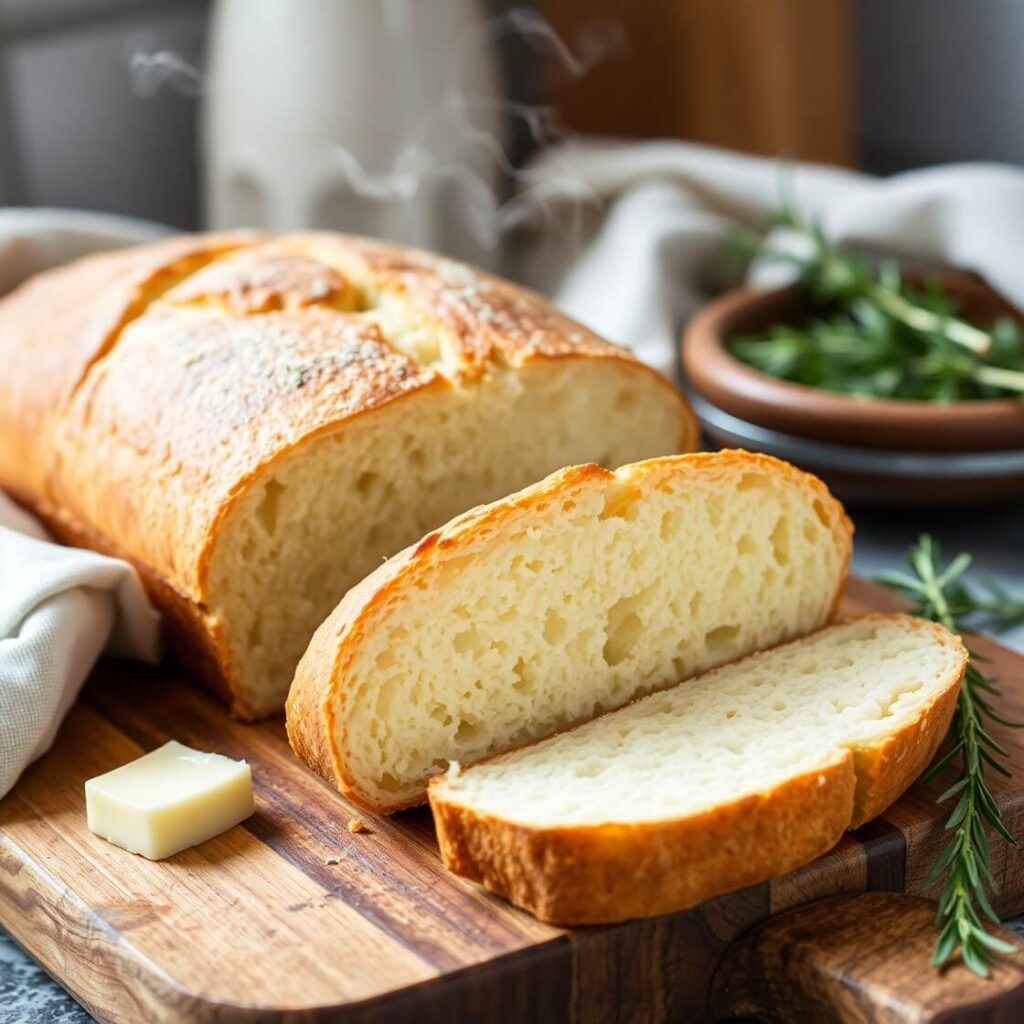
Like any great recipe, there are always ways to elevate the flavor and texture of your Cottage Cheese Bread. Here are a few tips and tricks that will make your baking experience even better:
- Use Room Temperature Ingredients: Make sure your cottage cheese, egg, and milk are all at room temperature before starting. This helps the dough come together more easily and rise better. Cold ingredients can slow down the yeast activation process.
- Knead for the Right Amount of Time: Don’t skip the kneading step, as it helps develop the gluten that gives the bread its structure. Knead for about 5-8 minutes, until the dough is smooth and elastic. This step is crucial to achieving the bread’s soft texture.
- Let It Rise in a Warm Place: Yeast thrives in warm environments. If your kitchen is cold, place the dough in an oven with just the light on or near a warm stove to help it rise. A well-risen dough will result in a lighter, fluffier loaf.
- Experiment with Flavors: If you want to give the bread a unique flavor twist, consider adding herbs like rosemary or thyme, or even grated cheese to the dough. These ingredients will infuse the bread with savory flavors that complement its texture and richness.
- Add a Milk Wash: For a glossy, golden top, brush the loaf with a little milk or melted butter right before baking. This gives it a beautiful finish that makes the bread even more appetizing.
Common Mistakes to Avoid
Even though this recipe is straightforward, there are a few common mistakes that can affect the outcome of your Cottage Cheese Bread. Here’s what to watch out for:
- Using Hot Milk: If the milk is too hot, it can kill the yeast, preventing the dough from rising. Always make sure the milk is warm, not hot—think the temperature of a warm bath.
- Over-Kneading or Under-Kneading the Dough: Too little kneading will result in dense bread, while over-kneading can make it tough. Aim for a soft, elastic dough that springs back when pressed.
- Not Letting the Dough Rise Properly: Giving the dough ample time to rise is essential. Don’t rush the process; allow the dough to double in size during each rise. If you don’t let it rise long enough, the bread may be dense and heavy.
- Not Baking Long Enough: If you take the bread out of the oven too early, the center will be raw. Make sure the bread is golden brown and sounds hollow when tapped on the bottom before removing it from the oven.
- Using Old Yeast: Yeast that’s past its expiration date may not activate properly, leaving your bread flat and dense. Always check the yeast’s expiration date and test it with warm milk and sugar before using it in the recipe.
How to Store It
If you’re lucky enough to have leftovers, Cottage Cheese Bread stores surprisingly well, especially given its moist texture. Here are a few storage tips to keep the bread fresh:
- Room Temperature: Store the bread in a bread box or wrap it in a clean kitchen towel. This will help keep it from drying out while allowing it to breathe. It should stay fresh for up to 2-3 days.
- Freezing: If you want to store the bread for a longer period, freeze it! Let the bread cool completely, then wrap it tightly in plastic wrap and aluminum foil. It can be frozen for up to 3 months. To thaw, simply let it sit at room temperature for a few hours or reheat it in the oven.
- Slicing Before Storing: If you plan to store the bread for a while, slice it before freezing. This way, you can take out individual slices as needed, without having to defrost the entire loaf.
FAQ
Here are some frequently asked questions about Cottage Cheese Bread:
1. Can I make Cottage Cheese Bread without yeast?
Yeast is an essential ingredient for this recipe as it helps the bread rise and gives it its soft, fluffy texture. However, you could try using a baking powder or soda substitute, but the texture and flavor will differ.
2. Can I use low-fat cottage cheese?
Yes, you can use low-fat cottage cheese, though the texture of the bread may be slightly less moist. Full-fat cottage cheese gives the bread a richer texture, but either version will work.
3. Can I add other ingredients to the dough?
Absolutely! You can experiment by adding herbs, garlic, or even shredded cheese to the dough for added flavor. Just make sure not to overload the dough with extras, as it could affect the bread’s texture and rise.
4. Why is my bread dense?
Dense bread could be due to under-kneading or not letting the dough rise properly. Ensure you knead the dough until smooth and elastic, and give it enough time to rise during both stages of the process.
5. Can I make this bread gluten-free?
Yes, you can substitute the all-purpose flour with a gluten-free flour blend. Just keep in mind that the texture may be slightly different, and you may need to adjust the amount of liquid depending on the brand of flour you use.
Cottage Cheese Bread Recipe
A soft, moist, and slightly tangy loaf of bread made with cottage cheese for added richness. Perfect for sandwiches, toasting, or just enjoying with a pat of butter.
- Prep Time: 15 minutes
- Cook Time: 35 minutes
- Total Time: 2 hours
- Yield: 1
- Category: Bread
- Method: Baking
- Cuisine: American
- Diet: Vegetarian
Ingredients
- 1 cup cottage cheese
- 2 cups all-purpose flour
- 1 package (2 ¼ tsp) active dry yeast
- 1 tbsp sugar
- 1 tsp salt
- 1 egg
- 2 tbsp unsalted butter, melted
- ½ cup warm milk
Instructions
- In a small bowl, combine warm milk, sugar, and yeast. Let sit for 5 minutes until foamy.
- In a separate bowl, mix together cottage cheese, butter, and egg.
- Add yeast mixture to the cottage cheese mixture and stir to combine.
- Gradually add flour and salt, kneading until smooth and elastic.
- Cover the dough and let it rise in a warm place for 1 hour.
- Punch down the dough, shape it into a loaf, and place it in a greased loaf pan.
- Let rise for an additional 30 minutes.
- Preheat oven to 350°F (175°C).
- Bake for 30-35 minutes, until golden brown.
- Let cool before slicing.
Notes
- For a glossy finish, brush the top of the loaf with milk or melted butter before baking.
- Experiment with adding herbs or cheese to the dough for additional flavor.
Nutrition
- Serving Size: 1
- Calories: 150
- Sugar: 2g
- Sodium: 220mg
- Fat: 6g
- Saturated Fat: 3g
- Unsaturated Fat: 2g
- Trans Fat: 0g
- Carbohydrates: 18g
- Fiber: 1g
- Protein: 5g
- Cholesterol: 30mg

